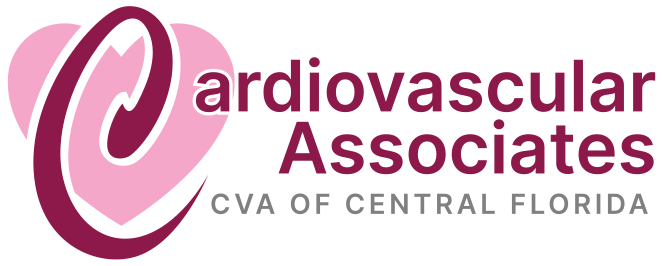Echocardiogram
How Does an Echocardiogram Work?
During an echocardiogram, a small handheld device called a transducer is placed on the patient's chest. The transducer emits ultrasound waves that bounce off the heart's structures and return as echoes. These echoes are then converted into images that are displayed on a monitor.
Cardiovascular Conditions Echocardiograms Can Help Diagnose
Echocardiograms are valuable diagnostic tools used to assess various cardiovascular conditions by providing detailed images of the heart's structures and function using ultrasound waves. Here are some cardiovascular conditions that an echocardiogram can help diagnose:
- Valvular Heart Diseases
Echocardiograms can assess the structure and function of heart valves, detecting conditions such as aortic stenosis, mitral regurgitation, and more. - Cardiomyopathies
These are diseases that affect the heart muscle and how it functions. Echocardiograms can help diagnose dilated cardiomyopathy, hypertrophic cardiomyopathy, restrictive cardiomyopathy, and other forms of myocardial disease. - Congenital Heart Defects
Echocardiograms are often used to identify structural abnormalities present at birth, such as septal defects, patent ductus arteriosus, and other anomalies. - Pericardial Diseases
Echocardiograms can detect conditions affecting the pericardium, the protective sac around the heart, including pericardial effusion (fluid accumulation), and constrictive pericarditis. - Heart Failure
Echocardiograms can assess the overall pumping function of the heart and help determine the underlying causes of heart failure. - Pulmonary Hypertension
Echocardiography can provide information about the pressure in the pulmonary arteries and the right side of the heart, which is crucial in diagnosing pulmonary hypertension. - Aortic Aneurysms and Dissections
Echocardiograms can visualize parts of the aorta and detect abnormalities like aneurysms (enlargements) and dissections (tears) in the aortic wall. - Infective Endocarditis
Echocardiography can reveal signs of infection in heart valves or within the heart's chambers. - Cardiac Tumors
Echocardiograms can detect tumors or abnormal growths within the heart, which can be both benign and malignant. - Thrombus or Blood Clots
Echocardiograms can help visualize blood clots within the heart chambers or attached to heart valves. - Monitoring Cardiac Function
Echocardiograms can be used to monitor the progression of various cardiovascular conditions and assess treatment effectiveness.
What to Expect Before, During, and After an Echocardiogram
A specially trained sonographer will perform your echocardiogram test. You won’t need to do much preparation before the test. You can still eat or drink as you normally would. You should also continue to take any medications as normal unless your doctor tells you otherwise.
During the test, you will lay on a bed, on either your back or your left side. The sonographer will place a small amount of gel on the ultrasound wand and place it on different areas of your chest. The test is typically painless and has no side effects. In some instances, we may need to place an IV in your arm to administer a medication that will improve the picture quality. This contrast agent allows us to capture more detailed images; however, we do not always need to use it. An echocardiogram usually takes 45 minutes to an hour to complete.
Benefits of Echocardiography
Echocardiography's non-invasiveness, real-time imaging capabilities, and versatility make it an indispensable tool for diagnosing, monitoring, and managing various cardiovascular conditions, contributing to better patient outcomes and quality of care. Here are some key advantages of echocardiography:
- Non-Invasive and Safe
Echocardiograms are non-invasive and do not involve radiation. - Pain-Free
Echocardiograms are painless and mostly comfortable for patients. The procedure only requires the placement of a transducer on the chest, which emits harmless ultrasound waves. - Real-Time Imaging
Echocardiography provides real-time images of the heart's structures and function, enabling immediate assessment by doctors. This real-time feedback is especially valuable during certain medical interventions. - Detailed Visualization
Echocardiograms offer detailed images of the heart's chambers, valves, blood vessels, and surrounding structures. This helps in detecting even subtle abnormalities. - Dynamic Assessment
The dynamic nature of echocardiography allows for the evaluation of heart movement, valve function, and blood flow patterns. This is crucial for diagnosing conditions related to cardiac motion and circulation. - Rapid Results
Since echocardiograms produce immediate images, healthcare providers can quickly analyze the results and make informed decisions about patient care and treatment plans. - Guidance for Procedures
Echocardiography aids in guiding certain cardiac procedures, such as catheterizations and valve replacements. It helps visualize the heart's anatomy and guide medical instruments accurately. - Minimal Patient Preparation
Patients usually require minimal preparation before undergoing an echocardiogram. This includes fasting before the test or wearing comfortable clothing. - Reproducibility
Echocardiography is a highly reproducible imaging modality, meaning that images can be obtained repeatedly to track changes in the heart's condition over time. - Monitoring Treatment Effectiveness
Echocardiograms allow doctors to monitor how a patient responds to treatment over time. This information helps adjust treatment plans as needed.
Photo Gallery
Video Gallery
Testimonials
Photo Gallery
Uncover Heart Conditions with an Echocardiogram
Get To Know Our Cardiologists
In Search of Care? Request a Consultation Today



